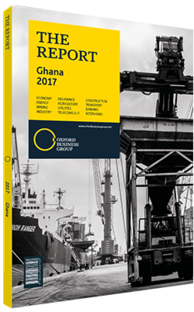Richard Anamoo, Director-General, Ghana Ports and Harbours Authority (GPHA): Interview

Interview: Richard Anamoo
How will the expansion plan elevate Tema Port to become a West African maritime hub?
RICHARD ANAMOO: Phase one of the $1.5bn continuing expansion programme will be completed by 2019. It will be a multi-port system, beneficial not only for containers but also for storage. Tema Port will feature several well-laid deep-draught berths of up to 16-17 metres, two new quays and several hectares of yard space, which is set to increase four-fold. Land will be available for development in Tema and Takoradi, both of which are being expanded simultaneously as part of phase two, which is set to be completed by 2021. The Tema expansion plan will look at how to capture traffic for the industrial and services sectors as well as open up a corridor for transit and trans-shipment, while reducing congestion. Built in the early 1960s, Tema Port has had to deal with the same surrounding infrastructure despite the population of Ghana tripling and the increasing demand that accompanies that level of growth.
There is need for an expansion because of the quantity of containers moving through the port. The principal reason for increased economic activity in the Tema Port is private sector involvement. GPHA establishes the regulatory environment, but all other port activities are undertaken by the private sector. The expansion programme will further increase the amount of private sector investment within proximity of the port.
To what extent will Tema’s new reefer terminal help to further control the flow of containers entering the country?
ANAMOO: The reefer terminal has been built to address the needs of frozen products being traded at the ports. With a growing population and demand, there are a lot more frozen products, such as fish, beef and poultry, that are coming into the country. Previously, vessels were unloading some portions of their reefer containers and returning with others because of capacity challenges. Now, with the new 840-unit reefer terminal, vessels will no longer have that dilemma. An increase in port capacity by almost 100% for reefer containers will give confidence to the shipping community that reefer services are available at Tema.
Neighbouring countries north of Ghana, namely Burkina Faso, Mali and Niger, use Ghana as a conduit for frozen agriculture and animal products, causing Tema to develop a transit terminal for trade with these landlocked markets.
How can greater integration of technology improve efficiency at Ghana’s ports?
ANAMOO: The ports are very sophisticated from an IT perspective. Electronic data transmission is being implemented with the introduction of a digitised terminal operating system, an enterprise resource management system, an automatic identification system and a vessel booking system. With the Ghana National Single Window (GNSW) now in effect, consolidation of all these external systems is available for GPHA and port companies.
Moving forward, Ghana should be able to exceed international requirements for the documentation and movement of goods transiting through the country’s ports. The GNSW will seek to address all the demands of the country’s statutory bodies, such as the Food and Drugs Authority when exporting agricultural products.
The GNSW seeks to enhance the entire logistics value chain from vessel to port, providing mobile alerts to the end user when and where their shipment has arrived at the port and if it has cleared Customs. By removing the need for the customer to be physically present at the port, it has become a more hassle-free process for all parties involved.
You have reached the limit of premium articles you can view for free.
Choose from the options below to purchase print or digital editions of our Reports. You can also purchase a website subscription giving you unlimited access to all of our Reports online for 12 months.
If you have already purchased this Report or have a website subscription, please login to continue.

